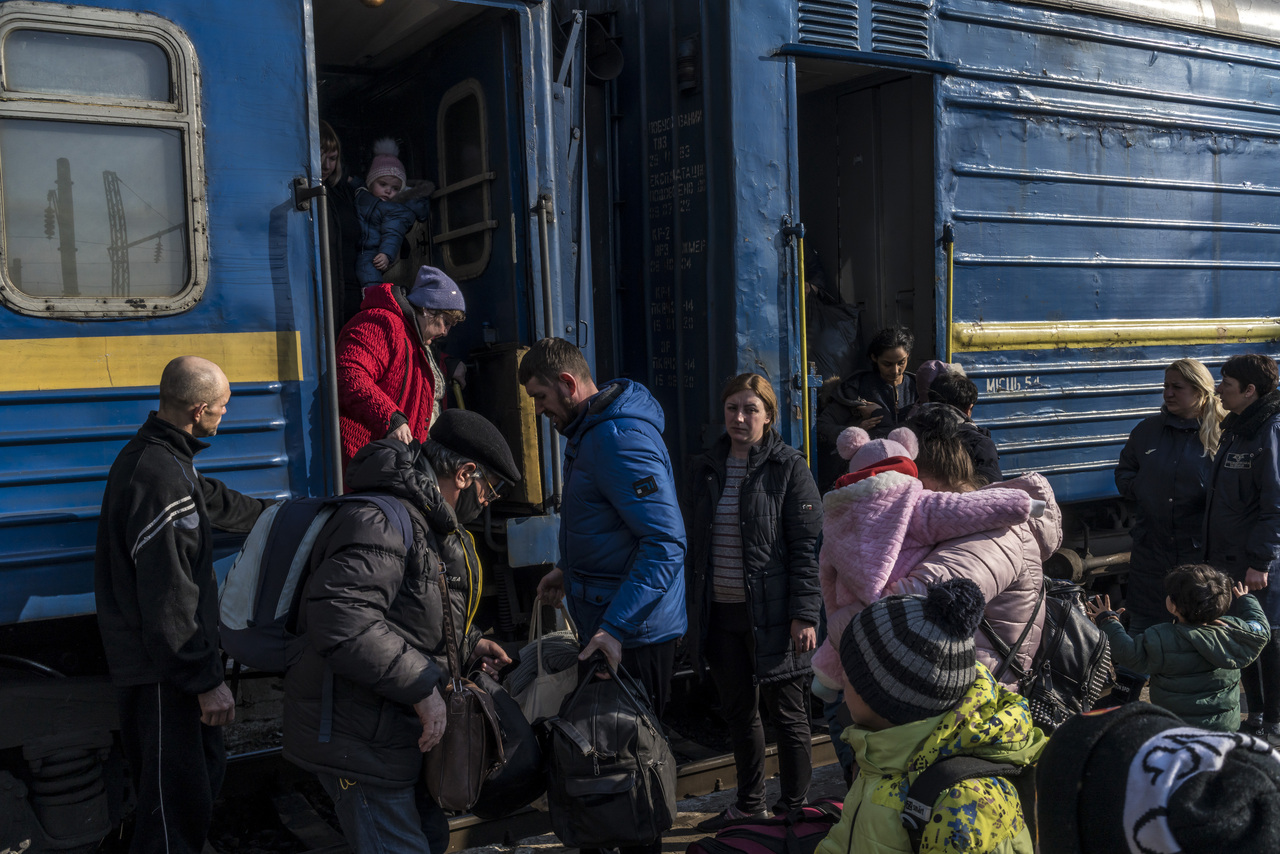Shivering evacuees drive to safety from Ukraine's besieged Mariupol
Sign up now: Get ST's newsletters delivered to your inbox

People disembark a train arriving from the eastern Ukrainian city of Zaporizhzhia in Ukraine on March 15, 2022.
PHOTO: NYTIMES
Follow topic:
ZAPORIZHZHIA, UKRAINE (AFP) - Exhausted, shivering and travelling in cars with shattered windscreens or no windows, some of the first evacuees from Ukraine's besieged Mariupol drove into the nearest safe city of Zaporizhzhia on Tuesday (March 15).
Around 20,000 people managed to leave the encircled port city on Tuesday through a humanitarian corridor agreed with Russian forces, President Volodymyr Zelensky's deputy chief of staff Kyrylo Tymoshenko said on Telegram.
"This is the first time I have been able to breathe in weeks," said father-of-two Mykola, his car a jumble of blankets, shoes and other hastily-packed belongings.
His family was among around 570 carloads who arrived in Zaporizhzhia, around 250 kilometres northwest.
Those in the remaining cars were forced to spend the night along the route, Mr Tymoshenko said.
Arriving in small batches, private vehicles with scraps of white material tied to the wing mirrors in a sign of truce pulled into the car park of a shopping centre on the city's outskirts, which is now a registration centre for displaced people.
They described a harrowing journey, forced to drive off-road to avoid Russian troops and checkpoints and facing the constant threat of enemy fire on the way.
Mykola, who asked not to give his full name as he cannot flee the country, said that just 40 kilometres away from Zaporizhzhia he had to drive his wife and two young children through a minefield with help from the Ukrainian military.
"As we passed through, there was a burnt-out car. Soldiers said a woman had been blown up after she hit a mine just one hour before we got there," he said.
The city of Zaporizhzhia is the first safe port of call for those fleeing Mariupol, many of whom are heading towards the country's west, and perhaps on to Poland or other bordering countries.
Tuesday's evacuation was much larger than Monday's, when a group of 160 cars left Mariupol, according to the city council.
The first successful evacuations come after several failed attempts since Russian forces surrounded the port city on the Azov Sea early this month.
'Bodies in the street'

Dmytro, who arrived with his wife and two young children in Zaporizhzhia on Tuesday, said it was his third attempt to leave Mariupol with his family.
On the previous attempts, he said, they had been "told to go home again" by Russian forces with tanks and machine guns.
His hands black with dirt, Dmytro said he had not washed in two weeks and that Mariupol residents were forced to drink river water.
He said he looted shops for food to feed his children and grandparents.
"We lived underground and if it was -4 deg C, it was a good temperature," he said.
Mariupol is facing a humanitarian catastrophe according to aid agencies, since heavy bombardment has left some 400,000 inhabitants with no running water or heating and food running short.
More than 2,100 residents have been killed in Mariupol since the Russian invasion, according to city authorities.
"Sometimes bodies are in the street for three days. The smell is in the air and you don't want your children to smell it," said Dmytro.
The International Committee of the Red Cross (ICRC) said on Tuesday the situation in Mariupol "remains dire" and that it was not able to deliver aid to the city.
"The bottom line is that hundreds of thousands of people are still suffering," the ICRC said.
Deputy Prime Minister Iryna Vereshchuk said that altogether, nearly 29,000 people managed to use humanitarian routes to flee encircled cities on Tuesday.

